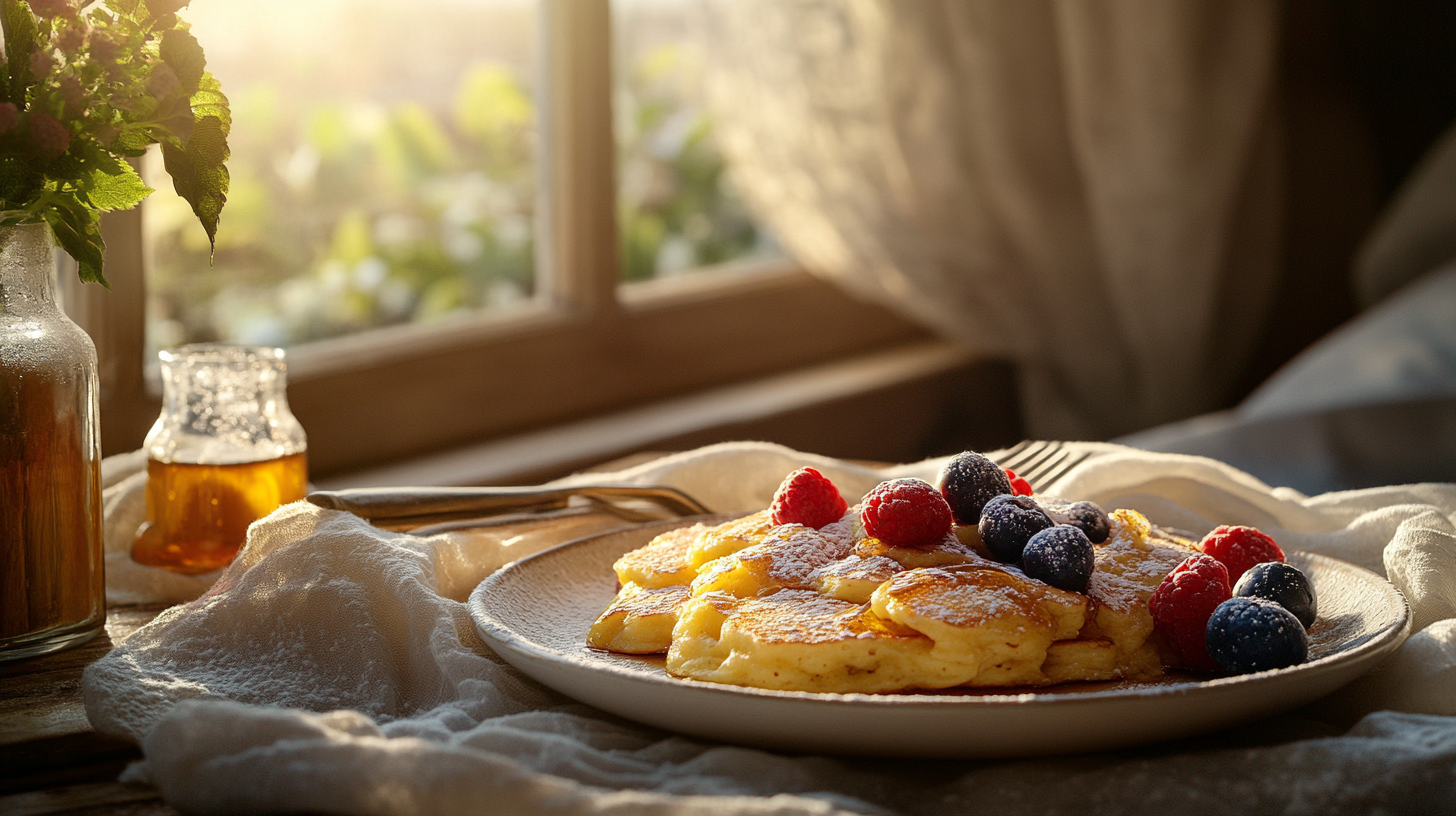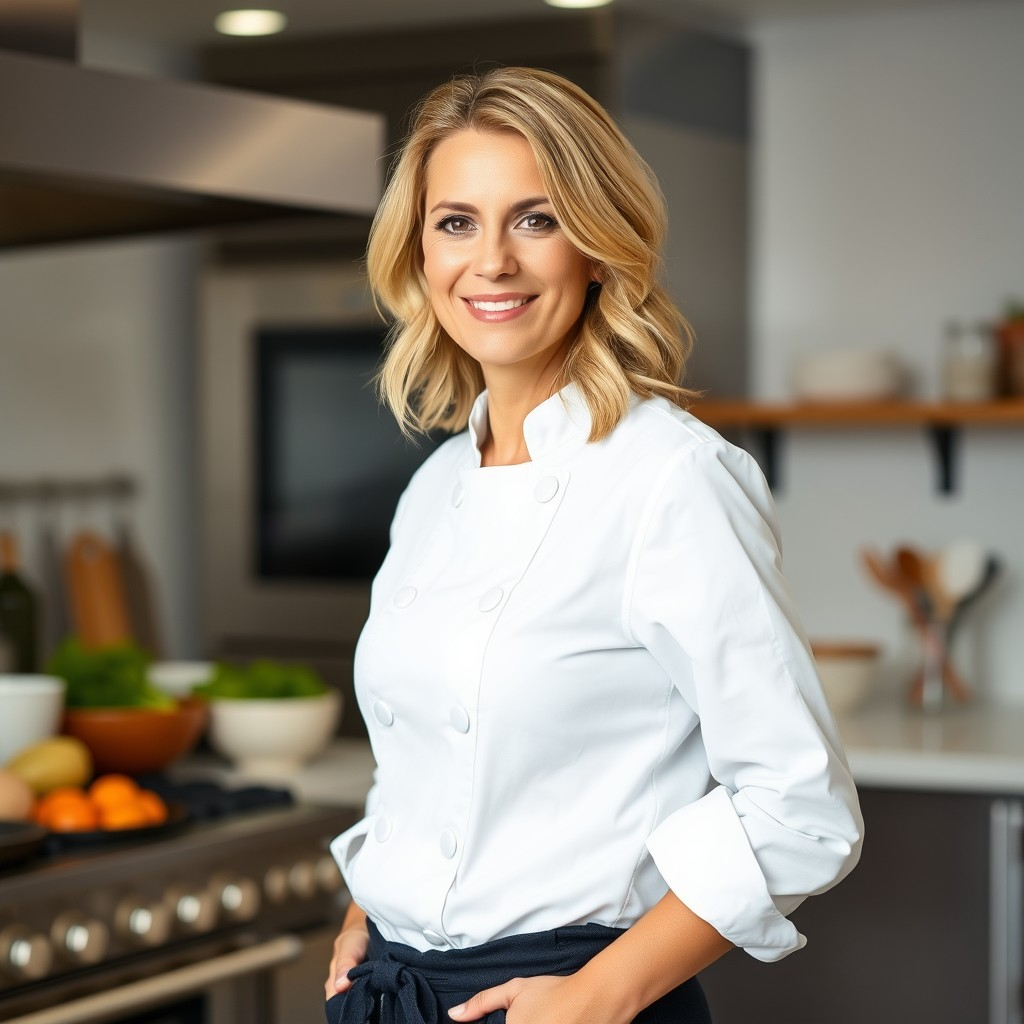Scrambled pancakes are a fun twist on traditional pancakes, offering a unique texture and look. Unlike regular pancakes, which are cooked as whole, round pieces, scrambled pancakes are instead broken into smaller, uneven pieces while cooking. As a result, this method creates a delightful mix of soft centers and crispy, golden edges.
For breakfast lovers, these pancakes are a fantastic choice. Not only can they be made sweet or savory depending on your taste, but they’re also incredibly easy to customize with a variety of toppings or mix-ins. For instance, you can add syrup, powdered sugar, or fresh fruit to enhance their flavor. Ultimately, scrambled pancakes deliver a cozy and delicious option for any breakfast table.
History of Scrambled Pancakes
The origins of scrambled pancakes can be traced back to Austrian cuisine, where they are famously known as Kaiserschmarrn. Originally created for Austrian royalty, this dish has gradually evolved over centuries. Consequently, it has become a cherished breakfast option in many cultures around the world.
Initially considered a dessert, Kaiserschmarrn gained popularity as a breakfast item due to its light, fluffy texture and adaptability. As it spread across regions, different cultures introduced their own twists. Some added fruits like apples or raisins, while others incorporated spices for unique flavor profiles.
In modern times, scrambled pancakes have become a global phenomenon, especially in homes that enjoy casual, hearty breakfasts. The method of scrambling pancakes allows for creative freedom, enabling cooks to tailor the dish to personal tastes. Its historical roots add a sense of tradition, making it a cherished recipe passed down through generations.
Why Choose Scrambled Pancakes?
There are countless reasons to try scrambled pancakes. To begin with, their irregular shape and texture make them stand out from traditional pancakes, offering a delightful combination of crispy edges and fluffy centers.
Moreover, scrambled pancakes are incredibly versatile. For instance, you can easily customize them to suit a variety of preferences. Whether you add sweet ingredients like chocolate chips and fruits or savory options such as cheese and herbs, they adapt beautifully. As a result, this flexibility makes them an excellent choice for satisfying different tastes within a single household.
Third, their preparation is simple and stress-free. Unlike standard pancakes, which require careful flipping, scrambled pancakes involve minimal technical effort. This makes them a great option for busy mornings or when cooking with children.
Lastly, they pair wonderfully with a variety of breakfast sides, from fresh fruit and yogurt to classic maple syrup. Their ability to complement other dishes ensures a satisfying and complete breakfast experience.
Pair your scrambled pancakes with a festive treat like our Christmas Butter Cookies for a delightful breakfast spread that’s perfect for the holidays!
Essential Ingredients for Scrambled Pancakes
To make scrambled pancakes, you’ll need just a few pantry staples. These basic ingredients form the foundation of this delicious breakfast dish:
- Flour: All-purpose flour works best, but you can substitute with whole wheat or gluten-free alternatives.
- Eggs: Essential for structure and fluffiness.
- Milk: Provides moisture and smooth consistency.
- Sugar: Adds a touch of sweetness.
- Butter: For richness and a golden finish.
Optional ingredients allow for personalization:
- Vanilla extract: Adds a warm, sweet aroma.
- Cinnamon or nutmeg: Perfect for enhancing the flavor.
- Fruits or nuts: A great way to introduce texture and variety.
Tools and Equipment You’ll Need
Having the right tools not only makes preparing scrambled pancakes straightforward but also ensures the process is enjoyable. Fortunately, most of these items are likely already in your kitchen:
- Mixing Bowls: Essential for combining your ingredients.
- Whisk: Helps achieve a smooth, lump-free batter.
- Non-stick Frying Pan: Ensures even cooking and prevents sticking.
- Spatula: Used for scrambling and flipping the pancakes during cooking.
- Measuring Cups and Spoons: Guarantees precise ingredient proportions.
For those without a non-stick pan, a well-seasoned cast iron skillet works as a substitute. Additionally, having a small sifter for powdered sugar topping or a ladle for portioning batter can enhance the overall experience.
Step-by-Step Recipe for Perfect Scrambled Pancakes
Follow these steps to create delicious scrambled pancakes effortlessly:
- Prepare the Ingredients: Gather and measure all the necessary items. Ensure the eggs and milk are at room temperature.
- Mix the Batter: In a bowl, whisk eggs and sugar until well combined. Gradually add the milk and then sifted flour, mixing until smooth. Avoid overmixing to keep the batter light.
- Preheat the Pan: Heat a non-stick pan on medium heat. Add butter and allow it to melt evenly.
- Cook the Pancakes: Pour a portion of the batter into the pan. Let it cook undisturbed until the edges begin to set. Using a spatula, break the pancake into smaller pieces, flipping as needed.
- Serve Warm: Once golden and fluffy, transfer the scrambled pieces to a plate and serve with your favorite toppings.
Tips for Achieving Fluffy Scrambled Pancakes
Perfecting scrambled pancakes involves small but significant techniques:
- Use Fresh Ingredients: This ensures optimal taste and texture.
- Do Not Overmix: Stirring the batter too much can make the pancakes dense.
- Maintain Medium Heat: Cooking at consistent heat prevents burning while achieving a fluffy interior.
- Flip Gently: Breaking the pancake too aggressively can lead to uneven cooking.
With these tips, you’ll consistently achieve scrambled pancakes that are both light and flavorful, ready to brighten any breakfast table.

Variations of Scrambled Pancakes
Scrambled pancakes are highly versatile, offering endless opportunities for creative twists. Here are some popular variations to inspire your next breakfast:
- Sweet Options: Add chocolate chips, blueberries, or shredded coconut to the batter for a dessert-like breakfast. Drizzle with caramel or serve with whipped cream for added indulgence.
- Savory Ideas: Mix in cheese, diced vegetables, or herbs like parsley or chives. Top with sour cream or a fried egg for a heartier option.
- Diet-Friendly Adjustments: Use almond or oat flour for gluten-free versions, and replace sugar with natural sweeteners like honey or maple syrup.
Pairing Ideas for Scrambled Pancakes
The beauty of scrambled pancakes is in how well they pair with a variety of breakfast sides and drinks. Some delightful options include:
- Beverages: Serve with freshly brewed coffee, herbal tea, or a fruit smoothie for a balanced start to your morning.
- Fresh Fruits: Add a side of strawberries, bananas, or mixed berries to brighten the dish.
- Protein Additions: Pair with scrambled eggs, crispy bacon, or sausage links to round out your meal.
For a lighter option, yogurt topped with granola pairs beautifully with scrambled pancakes. Together, these combinations enhance the breakfast experience, creating a meal that feels both complete and satisfying.
Scrambled Pancakes Around the World
Though scrambled pancakes are often associated with Austrian Kaiserschmarrn, they have inspired similar dishes across the globe. Here are some international adaptations:
- Austria: Kaiserschmarrn, served with plum compote or applesauce, remains a classic breakfast or dessert.
- Germany: Variants often include raisins soaked in rum for added flavor.
- India: A savory take includes spices like cumin and coriander, paired with chutneys.
- USA: Pancake bites, cooked with syrup or crispy bacon, echo the scrambled pancake concept.
Frequently Asked Questions About Scrambled Pancakes
- What are scrambled pancakes made of?
They are made from a basic pancake batter cooked and broken into small, irregular pieces during cooking. - Can I make them ahead of time?
Yes, you can prepare the batter in advance or reheat cooked pancakes for a quick breakfast. - What toppings go well with scrambled pancakes?
Popular choices include syrup, powdered sugar, fruit compote, or savory options like cheese and herbs. - Can I make a gluten-free version?
Absolutely! Substitute all-purpose flour with almond or gluten-free flour blends. - Why are my scrambled pancakes sticking to the pan?
Ensure you use a well-greased, non-stick pan or seasoned skillet. - Are they suitable for kids?
Definitely! They’re easy to customize with kid-friendly toppings like chocolate or fruit.
Troubleshooting Your Scrambled Pancakes
If your scrambled pancakes aren’t turning out as expected, here are solutions to common issues:
- Too Dry: Add an extra splash of milk to the batter.
- Not Fluffy Enough: Ensure you don’t overmix, as this can deflate the batter.
- Burning Easily: Lower the heat and use a non-stick pan for even cooking.
- Sticking to the Pan: Grease the pan adequately with butter or oil before cooking.
By addressing these small adjustments, you’ll perfect your scrambled pancakes every time.
Hosting a Scrambled Pancake Brunch
A scrambled pancake brunch is a fun way to entertain guests while showcasing your culinary creativity. Here are some tips for a successful event:
- DIY Topping Bar: Set up a station with syrups, fruits, nuts, and whipped cream so guests can customize their plates.
- Savory Options: Include cheese, ham, or roasted vegetables for those who prefer savory flavors.
- Pre-Preparation: Mix the batter and chop toppings in advance to save time during the event.
This approach ensures your guests enjoy a relaxed and interactive dining experience centered around scrambled pancakes.
Creative Presentation Ideas for Scrambled Pancakes
Make your scrambled pancakes visually appealing with creative serving styles:
- Layered Stacks: Arrange the scrambled pieces in layers with toppings like yogurt or fruit compote.
- Skillet Serving: Present them directly in a cast-iron skillet for a rustic, family-style approach.
- Mini Bites: Use smaller batter portions for bite-sized pieces, ideal for sharing platters.
Seasonal Recipes Featuring Scrambled Pancakes
Incorporate seasonal flavors into your scrambled pancakes to celebrate different times of the year:
- Spring: Add fresh berries and a lemon glaze for a light, refreshing dish.
- Summer: Use tropical ingredients like mango or pineapple, paired with coconut flakes.
- Autumn: Include pumpkin spice or apple chunks for a cozy seasonal treat.
- Winter: Top with spiced syrup, cranberries, or nuts for a festive touch.
The Joy of Experimenting with Scrambled Pancakes
Experimenting with scrambled pancakes allows you to express culinary creativity. Whether you’re trying new flavor combinations, exploring global twists, or perfecting presentation, each batch offers an opportunity to innovate.
To make scrambled pancakes even more exciting, consider adding unexpected ingredients like matcha, espresso powder, or savory spices for a unique twist. Additionally, you can collaborate with family or friends to invent custom recipes, thereby turning breakfast into a fun and engaging group activity.
FAQs
Do you eat pancakes with a fork or spoon?
Pancakes, including scrambled pancakes, are typically eaten with a fork. The fork helps you cut through the soft and fluffy texture, making it easier to scoop up the perfect bite along with toppings like syrup, fruit, or whipped cream. A spoon is less commonly used because pancakes are not liquid-based, but it might be handy for enjoying any extra syrup or compote on the plate.
Why do you always throw away the first pancake?
The first pancake is often thrown away because it serves as a test for the pan’s temperature and butter or oil distribution. This pancake helps ensure that the surface is evenly heated and well-greased, setting the stage for perfectly cooked pancakes in subsequent batches. The first one might also cook unevenly or absorb too much fat, making it less desirable. However, it doesn’t have to go to waste—it can be eaten as a quick taste test or shared with someone nearby!
Do pancakes taste better with water or milk?
Pancakes generally taste better when made with milk instead of water. Milk adds richness, moisture, and a slight sweetness that enhances the flavor and texture of the batter. It also contributes to the fluffy consistency of pancakes by interacting with the eggs and flour. Water, while it works as a substitute, lacks the creaminess and flavor that milk provides, making the pancakes taste a bit flat or less indulgent.
What are the two types of pancakes?
The two main types of pancakes are thin pancakes and thick pancakes. Thin pancakes, like crepes, are light and delicate, often rolled or folded with fillings such as fruits, chocolate, or savory ingredients. Thick pancakes, such as American-style or scrambled pancakes, are fluffier and denser, typically stacked and served with toppings like syrup, butter, or powdered sugar. Both types are delicious in their own ways, offering different textures and serving styles.
Conclusion
Scrambled pancakes are a delightful and versatile breakfast option that brings fun and creativity to your mornings. Whether you’re savoring their crispy edges and fluffy interiors, experimenting with sweet or savory variations, or pairing them with your favorite sides, these unique pancakes offer endless possibilities.
Their ease of preparation makes them accessible for all skill levels, while their adaptability ensures they cater to a variety of tastes and occasions. From hosting a cozy brunch to trying seasonal flavors, scrambled pancakes are more than just a recipe—they’re an experience that can bring joy to any breakfast table.


